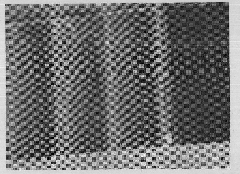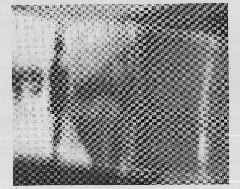Polymer electrolyte for lithium battery and manufacturing method of battery thereof
A polymer and electrolyte technology, which is applied in the manufacture of electrolyte batteries, lithium batteries, secondary batteries, etc., can solve the problems of residual polymerized monomers and initiators, affecting battery performance, and high viscosity of electrolytes, and achieves a simple and easy preparation process row, high capacity, and high cycle performance
- Summary
- Abstract
- Description
- Claims
- Application Information
AI Technical Summary
Problems solved by technology
Method used
Image
Examples
Embodiment 1
[0056] The electrolyte composition is:
[0057] Polymer: methyl methacrylate polymer, molecular weight 20000, adding amount 3.0%, vinyl acetate polymer, molecular weight 80000, adding amount 2.0%;
[0058] Lithium salt: LiPF 6 : 10.0%, LiBF 4 : 2.0%;
[0059] Film-forming additives: vinylene carbonate (VC) 0.5%, 1, 3-propiolactone sulfonate (1, 3-PS) 5.0%;
[0060] Surfactant: Perfluorooctylsulfonyl 3-aminopropyltrimethoxysilane 0.05%;
[0061] The balance is non-aqueous solvent, and its proportion is: EC:PC:DEC=1:1:3.
[0062] Preparation method: Mix non-aqueous solvent, lithium salt, and additives evenly to obtain a mixed solution, add polymer while stirring at 10°C, and obtain a polymer electrolyte after completely dissolving.
Embodiment 2
[0064] The electrolyte composition is:
[0065] Polymer: methyl methacrylate polymer, molecular weight 60000, adding amount 3.0%, vinylidene fluoride polymer, molecular weight 16000, adding amount 1.5%;
[0066] Lithium salt: LiPF 6 : 10.0%, LiBF 4 : 2.0%;
[0067] Film-forming additives: vinylene carbonate (VC) 0.5%, 1, 3-propiolactone sulfonate (1, 3-PS) 5.0%;
[0068] Surfactant: Perfluorooctylsulfonyl 3-aminopropyltrimethoxysilane 0.05%;
[0069] The balance is non-aqueous solvent, and its proportion is: EC:PC:DEC=1:1:3.
[0070] Preparation method: Mix non-aqueous solvent, lithium salt, and additives evenly to obtain a mixed solution, add polymer while stirring at 10°C, and obtain a polymer electrolyte after completely dissolving.
Embodiment 3
[0072] The electrolyte composition is:
[0073] Polymer: polyvinylpyrrolidone, molecular weight 120000, adding amount 2.0%, vinylidene fluoride polymer, molecular weight 50000, adding amount 1.0%;
[0074] Lithium salt: LiPF 6 : 10%;
[0075] Film-forming additives: vinylene carbonate (VC) 0.5%, 1,3-propiolactone sulfonate (1,3-PS) 1.0%, fluoroethylene carbonate (FEC) 1.5%, tris(trimethylsilane) ) Phosphate 0.5%;
[0076] Anti-overcharge additive: biphenyl (BP) 1%;
[0077] Flame retardant: 5% triphenyl phosphate, 8% hexachlorocyclotriphosphazene;
[0078] Electrolyte stabilizer: 0.2% hexamethylene isocyanate;
[0079] The balance is non-aqueous solvent, and its proportion is: EC:PC:DMC:EMC=2:1:3:1.
[0080] Preparation method: Mix non-aqueous solvent, lithium salt, and additives evenly to obtain a mixed solution, add polymer while stirring at 50°C, and obtain a polymer electrolyte after completely dissolving.
PUM
 Login to View More
Login to View More Abstract
Description
Claims
Application Information
 Login to View More
Login to View More - R&D
- Intellectual Property
- Life Sciences
- Materials
- Tech Scout
- Unparalleled Data Quality
- Higher Quality Content
- 60% Fewer Hallucinations
Browse by: Latest US Patents, China's latest patents, Technical Efficacy Thesaurus, Application Domain, Technology Topic, Popular Technical Reports.
© 2025 PatSnap. All rights reserved.Legal|Privacy policy|Modern Slavery Act Transparency Statement|Sitemap|About US| Contact US: help@patsnap.com



